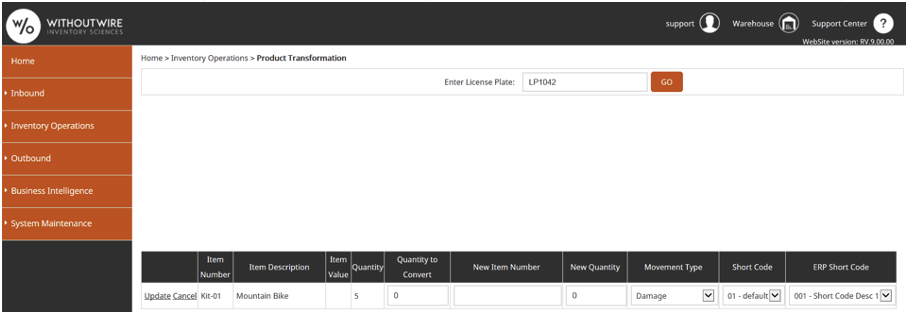- 1 Minute to read
- PDF
Product Transformation
- 1 Minute to read
- PDF
Product Transformation
Product Transformation is used to convert one item into another existing Item. For example, when a product is created, manufacturing issues can cause the product to be of lower quality. If this lower quality product is still a product you track and has its own item number, you would use Product Transformation to convert this product to the other item number. Another reason to use Product Transformation is if the manufactured product’s packaging has been damaged. You can use Product Transformation to convert the product into smaller packages, provided the smaller size is inventoried.
If an item is a non-basic item type (lot/serial/expiration date), it can only be transformed into another item with the same lot/serial/expiration date as the original item. Also, the newly transformed product will be created in the same location as the original Item. This preserves item traceability.
This feature is found in the Inventory Operations Tab > Product Transformation.

Enter the bin or license plate containing the items you want to transform.
Click the Go button.
Select the Edit link by the item you want to transform.
Enter the quantity of the original item you want to convert in the Quantity to Convert field.
Enter the new item number that is being created in the New Item Number field. (This item number must already exist).
Enter the new quantity of the new item being created in the New Quantity field. The Movement Type details the adjustment method for the inventory adjustment: regular adjustment, damage, etc.
Select the movement type from the Movement Type drop-down list.
Short Code and ERP Short Code are always set to default but can be customized upon request.
Click on the Update link and the new product will be created on the same License Plate.

Remember that adjustments are not ideal from a traceability standpoint. They will not allow you to see how that item came into existence, or what original materials it came from if you research it later.
